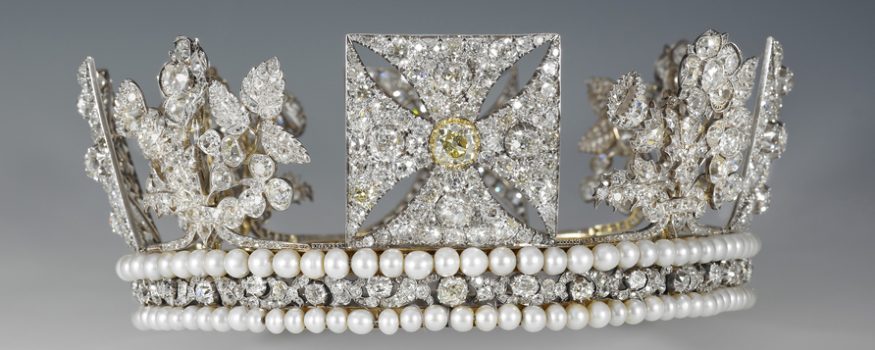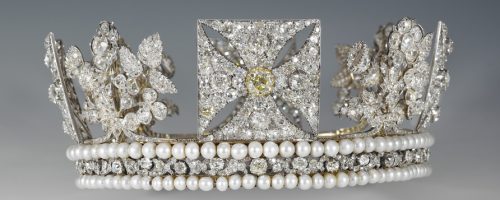Royal Collection Trust/© Her Majesty Queen Elizabeth II 2019
A new exhibition George IV: Art & Spectacle has opened at The Queen’s Gallery, Buckingham Palace until 3 May 2020, marking the 200th anniversary of the Monarch’s ascent to the throne. Items worn by the monarch for his 1821 coronation are being brought back together for the first time since the flamboyant occasion.
The Diamond Diadem, designed for George IV’s coronation by jewellers Rundell Bridge & Rundell, is set with 1,333 diamonds, including a four-carat pale yellow brilliant diamond. George IV paraded the crown on top of a large velvet “Spanish” hat surmounted by ostrich feathers and a curled wig beneath, during the walking procession to Westminster Abbey. The Diamond Diadem has been regularly worn by queens regnant and consorts ever since, and today Her Majesty The Queen wears the circlet to and from the State Opening of Parliament.
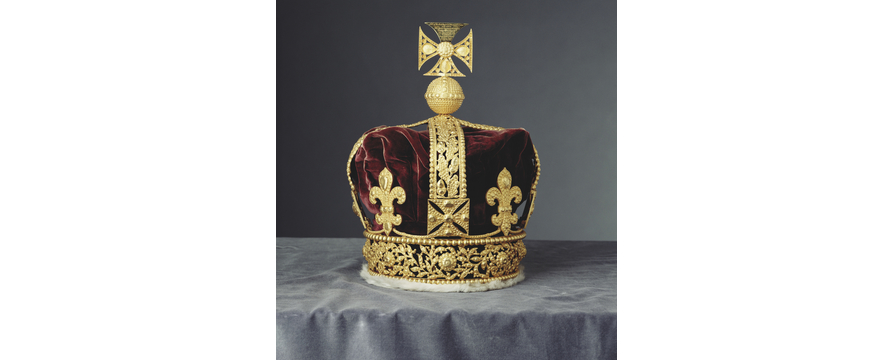
Royal Collection Trust/ © Her Majesty Queen Elizabeth II 2019
The coronation was the most spectacular moment of George’s life and came at a cost of more than £240,000. The King himself oversaw the design of his coronation attire, including the crimson velvet surcoat and a stole made from cloth of silver, gold thread and silk, embroidered with the national flowers of the United Kingdom. Sir Thomas Lawrence’s coronation portrait shows the King in his ceremonial clothing with the Imperial State Crown, traditionally remade for the coronation of each new monarch, placed on a table to his right. The crown was set with more than 12,300 diamonds that had been hired for the occasion. George wanted to keep the crown after the ceremony, but Parliament refused to support the cost. The King, therefore, commissioned a gilt-bronze cast of the Imperial State Crown, which is on public display for the first time.
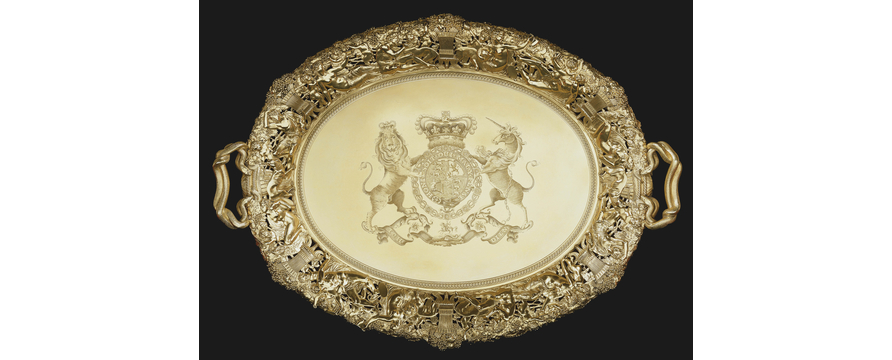
Royal Collection Trust /© Her Majesty Queen Elizabeth II 2019
At the coronation banquet, works were displayed from the Grand Service, an unrivalled 4,000-piece collection of dining and buffet silver-gilt that George first commissioned when Prince of Wales and is still used today at State Banquets. A spectacular silver-gilt tray by goldsmith Paul Storr for Rundell, Bridge & Rundell, weighing over 9kg and engraved with the Royal Arms and the Prince of Wales’s coronet, was put on show prominently behind the King.
King George IV also acquired numerous works of art with which to decorate his residences, and these remain some of the greatest items in the Royal Collection. As Prince of Wales, he lived at Carlton House on London’s Pall Mall. Within ten years of taking possession of the mansion in 1783, he had run up debts of around £400,000, furnishing the rooms with paintings, the finest French furniture and decorative arts, and creating a series of interiors that were widely regarded as among the most handsome in Europe.
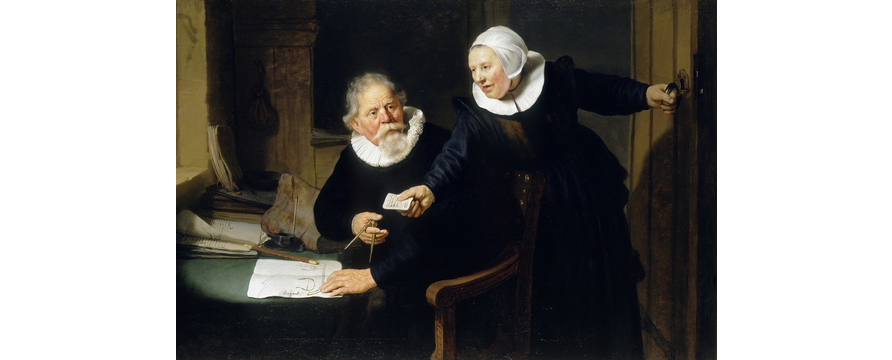
Royal Collection Trust /© Her Majesty Queen Elizabeth II 2019
George admired pictures of painterly quality with a high degree of finish and strong narrative content, particularly Dutch and Flemish 17th-century works. In 1811, he purchased Rembrandt’s The Shipbuilder and his Wife for 5,000 guineas, the most expensive painting he ever acquired. One of his most prized possessions was Landscape with Saint George & the Dragon by Peter Paul Rubens. The painting was first acquired by Charles I and sold after his execution, before being purchased by George in 1814.
George’s appreciation of exquisite craftsmanship and fine materials is demonstrated in his collection of exceptional decorative works of silver, known as a Kunstkammer or ‘cabinet of curiosities’. One of the highlights of his Kunstkammer is the Nautilus cup and cover by Nikolaus Schmidt, which stands at more than half a metre in height.
The King read voraciously on topics ranging from geography and military history to the work of Jane Austen. His enthusiasm for sport included horseriding, boxing, cricket and fencing. Visitors will see for the first time, The Fencing-Match between the Chevalier de Saint-George and the Chevalier d’Eon by Alexandre-Auguste Robineau, which depicts a celebrity fencing display at Carlton House.
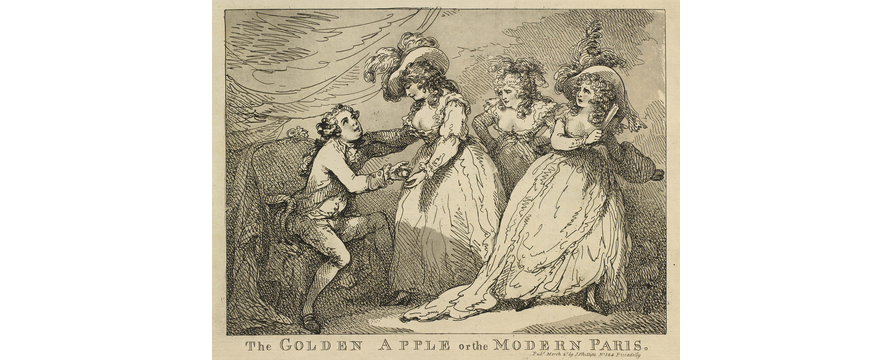
Royal Collection Trust /© Her Majesty Queen Elizabeth II 2019
Throughout his reign, George’s extravagant spending and extramarital affairs made him a prime target for the satirists of the day. Perhaps surprisingly, he himself acquired many works that gently poked fun at his misdemeanours. Visitors will be able to see the etching The Golden Apple, which shows the king as a prince, choosing which of three women to lavish his attentions on. Other prints in circulation were far more critical, such as Robert Seymour’s The Great Joss and his Playthings, which condemns the King’s tastes for exotic luxuries and his obsession with building and improving royal residences at great cost.
On the one hand, George was a recklessly profligate showman, who had little regard for the hardships suffered by the rest of the country, and on the other, he was a connoisseur with intellectual interests, whose passion for collecting left a great artistic legacy. Through more than 300 works from the Royal Collection, George IV: Art & Spectacle sheds new light on this monarch of extreme contrasts.
For more information, please visit the website.



